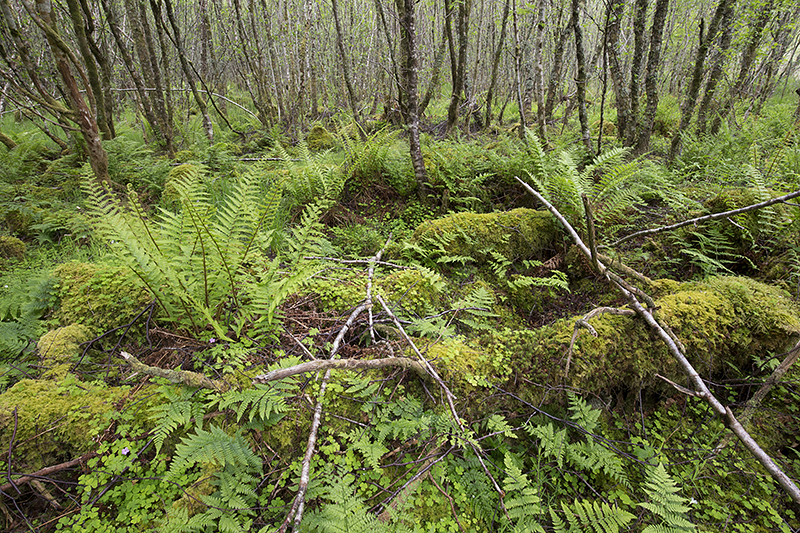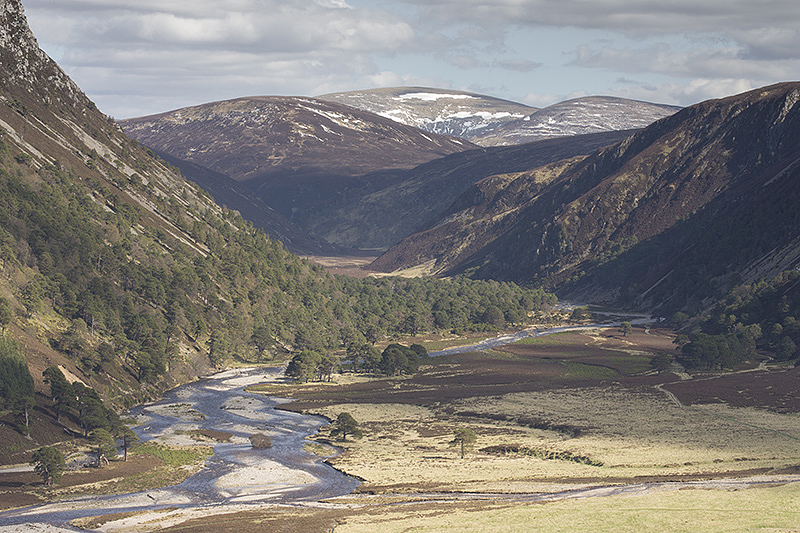Rare. Elusive. Nocturnal. Aquatic. None of these words caused me to brim with confidence as I drove west recently in search of Scotland’s newest wildlife resident. Knapdale Forest in Argyll was chosen as the site for the Scottish Beaver Trial, a 5-year investigation into the impact of beavers on their habitat and their potential as a boost to rural tourism. Back in 2009, 16 beavers were brought from Norway and via a 6-month quarantine and various medical checks, were released into a number of freshwater lochs surrounded by willow, hazel, alder and oak.
Tag: Beavers
Rewilding: Is it time?
Mention the ‘R’ word in some circles and hackles rise. Visions of out-of-control wolves on a killing spree spring to mind and primeval fears mixed with deep-seated cultural resentment of change, bubble to the surface. Politics too, is inextricably linked to the potential, or otherwise, for rewilding. Continue reading “Rewilding: Is it time?”
Bears, beavers and bugger it – the camera is coming!
What is a holiday? A chance to do what you like doing? Yes, exactly. And I like taking photos which means I take my camera on holiday. No ifs, no buts and no amount of protestation from my good wife.
And so it was I agreed to a holiday in Yellowstone. I say “agreed”, it’s hardly a hardship to spend time in one of the most exciting places on earth. If you’ve never been to this part of the world, it is above all else, exciting. The scenery is gobsmacking, the wildlife abundant but that’s not the attraction for me: Yellowstone is damned exciting. It’s exciting because it’s effectively a volcano spewing and spluttering its intentions ceaselessly; it’s exciting because it was America’s first National Park signalling a new era in land custodianship; it’s exciting because it now attracts 3 million visitors a year; it’s exciting because with the return of wolves in 1995, it is claimed to be one of the last true wilderness areas of the northern Hemisphere. Now, we could debate the definition of ‘wilderness’ all day but anywhere that creeps close to it (especially a place with wild wolves) that also accommodates 3 million people, is VERY exciting to me.
Ian taking some time out…with a friend.
Amanda my wife, and our close friends Eileen and Ian, had never been to Yellowstone whereas I had the knowledge built up over many visits with tour groups. This inevitably resulted in me becoming the (unpaid) tour guide, a role that was remunerated only through the occasional opportunity to take pictures – I did less than 1gb in two weeks so please don’t give me a hard time!
Initially based in Mammoth, we took in the famous Lamar Valley where one early start rewarded us with roadside wolf howling, the like of which I’d never experienced. Thick forest prevented a view but we knew…we felt…those wolves were close. From West Yellowstone we saw grizzly and cubs, black bear up close (a bit too close for Eileen), beaver and river otters. One morning we witnessed a young wolf swimming the Yellowstone River and bumped into the same animal close to the road the following day. Moving south we immersed ourselves in the rustic delights of Old Faithful Inn for two nights before leaving Yellowstone for Grand Teton where moose were abundant but the fall colour was regrettably past its best.
These River Otters can really shift – I just managed to grab this shot as a family swam upstream one evening at sunset.
It’s been several years since my last visit to Yellowstone and there was a noticeable change in the profile of visitors with many more nationalities represented – surely a sign of emerging economic wealth and perhaps in tandem with an increasingly urbanised lifestyle, a latent yearning to flirt with nature? I’m not sure, but it seems that the wilderness is no longer the preserve of wealthy Westerners and although I have concerns about the impact of ever-growing visitor numbers, that is surely no bad thing?
Our final day was spent on horseback high above Jackson Hole and in full view of the National Elk Refuge, the controversial wintering grounds for beleaguered elk and not a million miles different from the practice of feeding red deer in Scotland – like I say, for anyone with an interest in the human-wildlife dynamic, this is an exciting place.
 The Good, the Bad and the very, very Ugly.
The Good, the Bad and the very, very Ugly.
If you scratch beneath the surface of the Yellowstone story – and it’s one helluva of a story – it will draw you in and sink its metaphorical teeth into your heart and mind. Over the years, this place has taught me more about wildness and how different people perceive and relate to that wildness, than anywhere else I’ve been.
The food is crap if you’re vegetarian; the French Vanilla cappuccinos are delicious but too sweet and the monster-sized trucks that pass as family cars get right up my nose (as do photographers that never reduce their tripods below head height) but if you can put up with these minor encumbrances, Yellowstone (and Grand Teton) is a delight.
Amanda after an early start and a lack of caffeine.
 The mind-boggling lobby at Old Faithful Inn.
The mind-boggling lobby at Old Faithful Inn.
Against the context of the emerging ecological ethos of the Greater Yellowstone Ecosystem, you might be interested in these web sites.
Change in the water?
We don’t do change very well: as a species I mean. Our manicured, orderly landscape bears witness to that, with any hint of ‘wilding’ touching a raw rural nerve and challenging our control of a landscape that was historically perceived to be for the exclusive use of one species only: us.
And so the beaver, an ostensibly innocuous water rat, has found its way into the news; not necessarily as an agent of ecological change but as a carrier of cultural change. The beavers of Knapdale in Argyll, although not universally welcomed, have at least arrived through ‘official channels’, those prescribed by European legislation. The beavers presently running amok in the Tay catchment however, are seemingly escapees of unknown origin and questionable genetics. They are not official beavers welcomed by an official policy by well…officials. Predictably therefore a divisive dispute is raging over whether the unofficial beavers should be left alone or rounded up and popped into captivity.
I have to say I’ve read numerous reports and find it difficult to disagree with either view. Scottish Natural Heritage, although often accused of a lack of flexibility, have their hands tied both by legislation and by strategic obligations. They have ruled that the beavers must be captured. Equally, the growing fan base for the itinerant beavers also offer valid arguments in terms of animal welfare and opportunities for ecological research. It’s a tricky one for sure.
What is perhaps predictable is that this won’t be the last dilemma of its kind. As the potential for the spread of non-native species increases (not that I’m suggesting the Tay beavers come under this category), against a backdrop of growing concern for the functionality of our ecosystems, and perhaps, the tendency towards societal extremes at the expense of pragmatism, deciding which species live where and to whose benefit, will become more and more difficult.
Managing change – brought about by beavers or otherwise – has never been easy and therein lies the social science of conflict resolution. There are people who study this stuff, they’ve become experts in it. They’re not conservationists, foresters, farmers or ecologists and that’s their strength. They know little of beavers but change isn’t about beavers, it’s about people. And resolving conflict relies on knowing about people and the ability to effectively communicate with them. I can’t help thinking that somewhere amongst all the talk of beaver legislation, ecology and welfare, there’s a role for a professional communicator, a manager of change, a resolver of conflict, a mediator – call it what you will.
It happens to be beavers in the Tay just now, but red deer, seals and pine martens, they’re all symbols of our changing relationship with nature. Perhaps that change needs some innovative management?
Is it a good time to bring up wolves?












